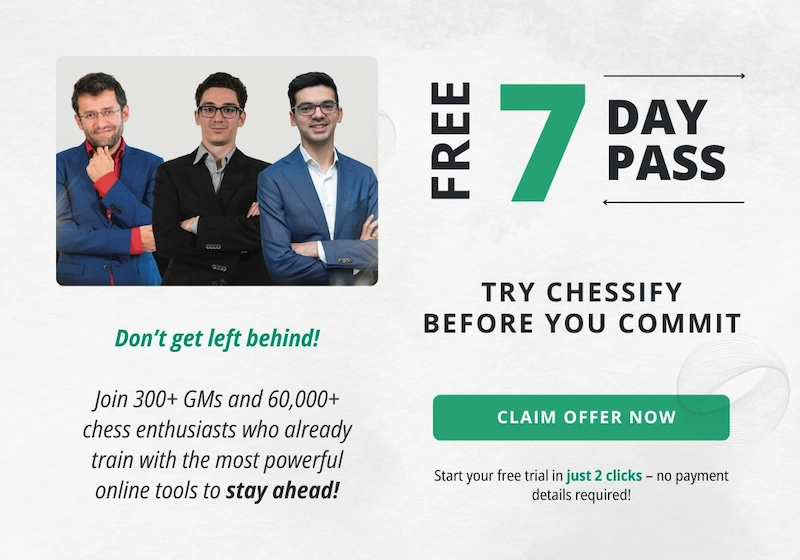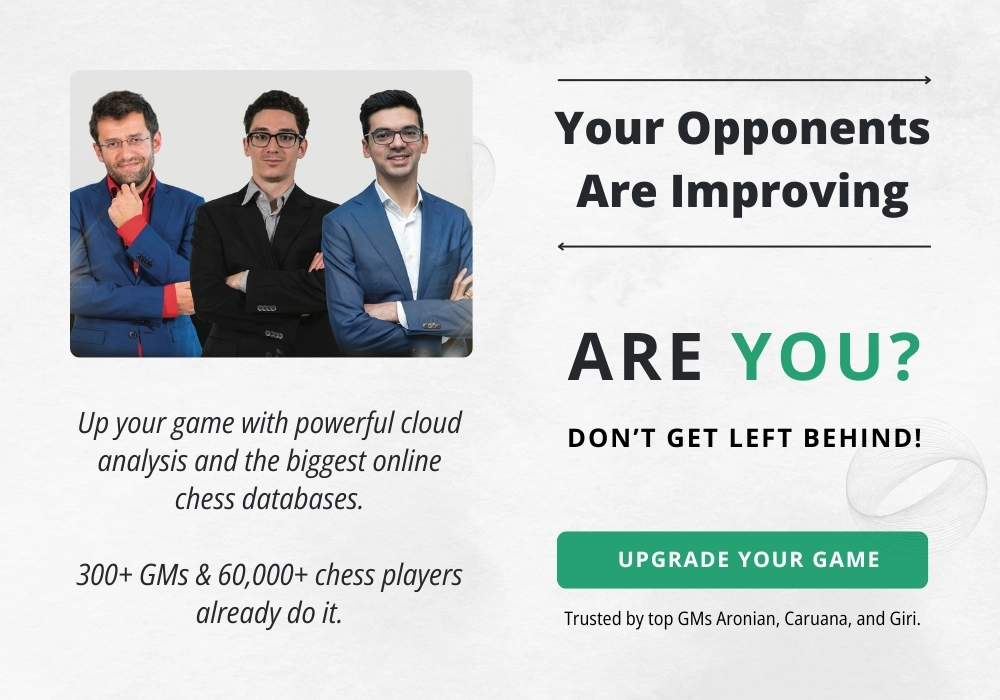
New to Chessify! What kind of beast is this? Where do I even click?!
Today, we’re introducing another new section called "A Beginner's Journey." It's no secret that Chessify's architecture is different from systems designed for position searching and analysis on a player's personal computer. Using cloud resources, external engines, and other technological advancements can completely change the working principles chess players have been accustomed to for decades.
Beginner's Journey 1. «Chessify. What kind of beast is this? Where do I even click?!"
Although I have always loved anything new and progressive, I’ve never really liked computers in chess: neither as "players" – at some point, they dethroned the human world chess champion, unraveling the mystery of chess and casting doubt on the game's very purpose – nor as assistants. Yes, databases were a real breakthrough, but they killed off chess books and trainers as a class because now you could easily get by without them. But most importantly, working on chess stopped being an exciting search for truth and turned into data verification: whatever the chess computer deemed correct became the truth. We even stopped evaluating positions like humans: instead of "better," "worse," or "with initiative." Instead, we started measuring everything in "engine pawns."
To be honest, ever since computers completely replaced live chess sessions – with a real chessboard and pieces – players moved to their laptop screens and, unknowingly, became "machine operators." They stopped caring about big questions and focused on one thing: how to get practical results as quickly and easily as possible – understanding unfamiliar positions and getting to know their opponents better... ChessBase and dozens of other systems provided the necessary tools for that. Each year, the databases grew larger, and the searches became more sophisticated. When chess engines entered the scene, playing far stronger than any human, the main task became memorizing everything you needed to know before the game.
Of course, the efficiency of work varied. Creators like Kasparov thrived – they generated tons of ideas and innovations, instantly getting feedback on each one. Scholars, who mainly explored others' discoveries, also had plenty of material to work with: there was more than enough new information, and searches that used to take days or weeks now took just minutes. Overall, everyone did more or less the same thing – searching, studying, and analyzing (either on their own or with a machine). The quality of work depended solely on the content of the chess database (which was mostly the same for everyone, except for secret analyses), the quality of the engines, and the megahertz of your workstation. The faster your processor, the more RAM you had, the quicker your analytical modules reached the depth needed for accurate positional evaluation.
The workflow itself was extremely primitive, and the actions were learned to the point of automatism. To put it bluntly, you started a search, set the position for analysis, then hit the spacebar and zoned out watching. Of course, there could be countless variations, but the actions were the same every time. The workspace had just three areas: the database, the set extracted by the search matrix, and finally, the specific chess game or position.
To navigate this without getting lost, you didn't need to "know" the computer – you just needed to press the right buttons. It was amazing to watch how older grandmasters, who weren't familiar with all the latest tech gadgets, skillfully handled ChessBase or similar software, Chess Assistant. ChessBase had embedded itself so deeply into the habits of chess players that all systems followed the same principle (database, search, and position analysis).
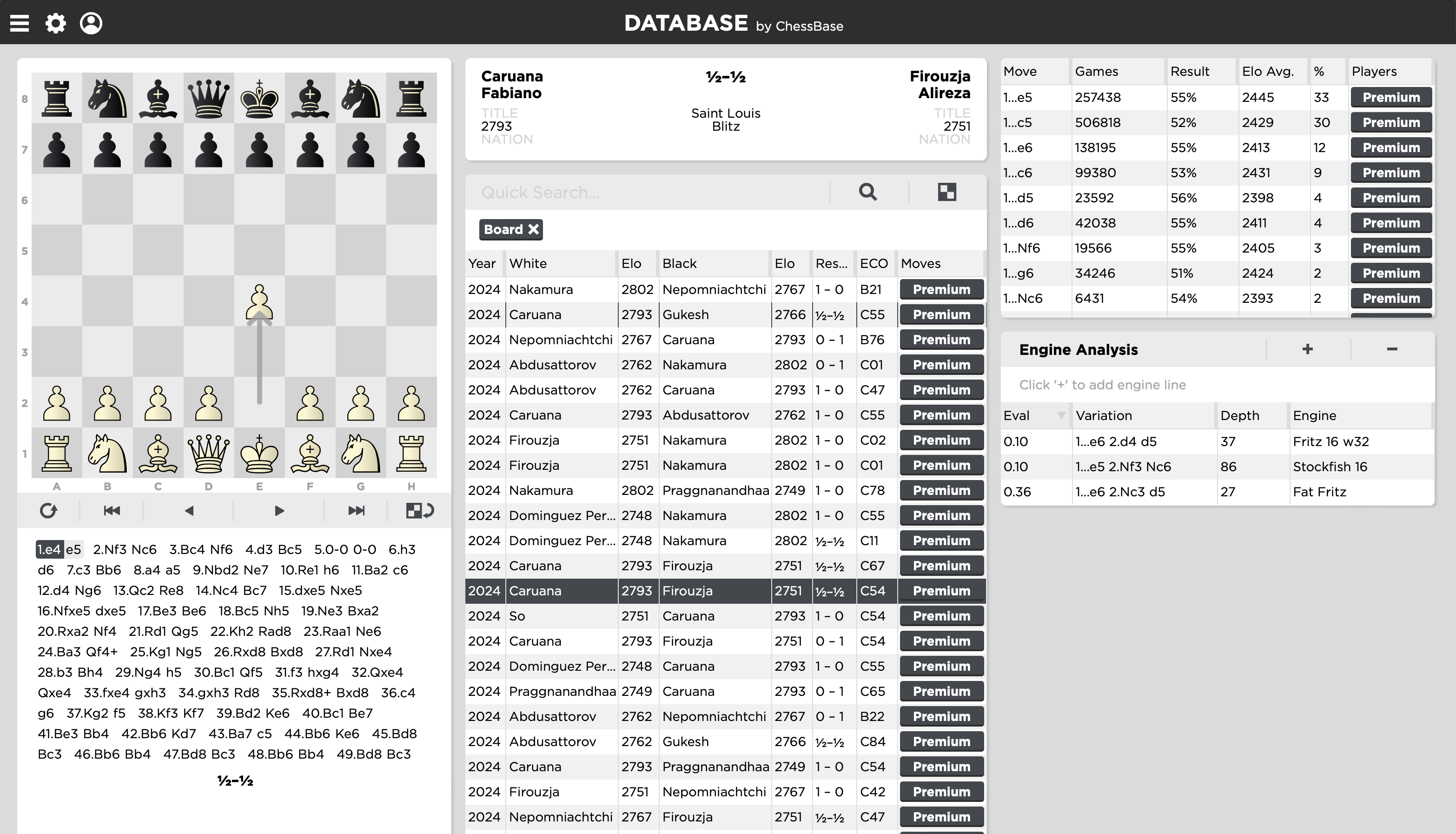
The operating systems could differ (Windows or Mac), and the databases could be stored locally or in the cloud, as could the chess engines – they increasingly relied on external resources rather than the user’s computer.
Any deviation from this norm was met with confusion... And then Chessify appeared among the new developments, offering a simple yet highly demanded feature (chess analysis with the best engines at maximum speed), interaction with real chess AI, and a fundamentally different architecture. It wasn’t so much about who played where, but what was played! Chess analysis took center stage, and everything else became secondary.
Instead of metadata, which our minds had clung to for so long – since chess moves are like phone numbers, practically impossible to remember accurately and in full – the focus shifted to specific positions and their evaluations. This is a true break from stereotypes, and you need to get used to it, to form a new habit.
When someone used to the good old ChessBase first encountered Chessify… they inevitably felt a bit panicked: "Wait, what do I click here?!" Nice graphics, colors, and fonts, photos of people you know and trust, but… where’s everything we expect to see? Where’s the chessboard, the database, and the familiar search? What’s the starting point? ChessBase opens with the main screen, after all.

You only calm down when you spot the "Go To Analysis Board" button at the top of the page. Phew, seems like we’re connected!

There it is, the familiar board, and you can enter something on it.

Familiar labels: chess engine Stockfish, Leela Chess Zero, and countless other options. Okay… depth, speed, number of lines, and, most importantly, remote server settings. Wow! The range of possibilities is impressive.
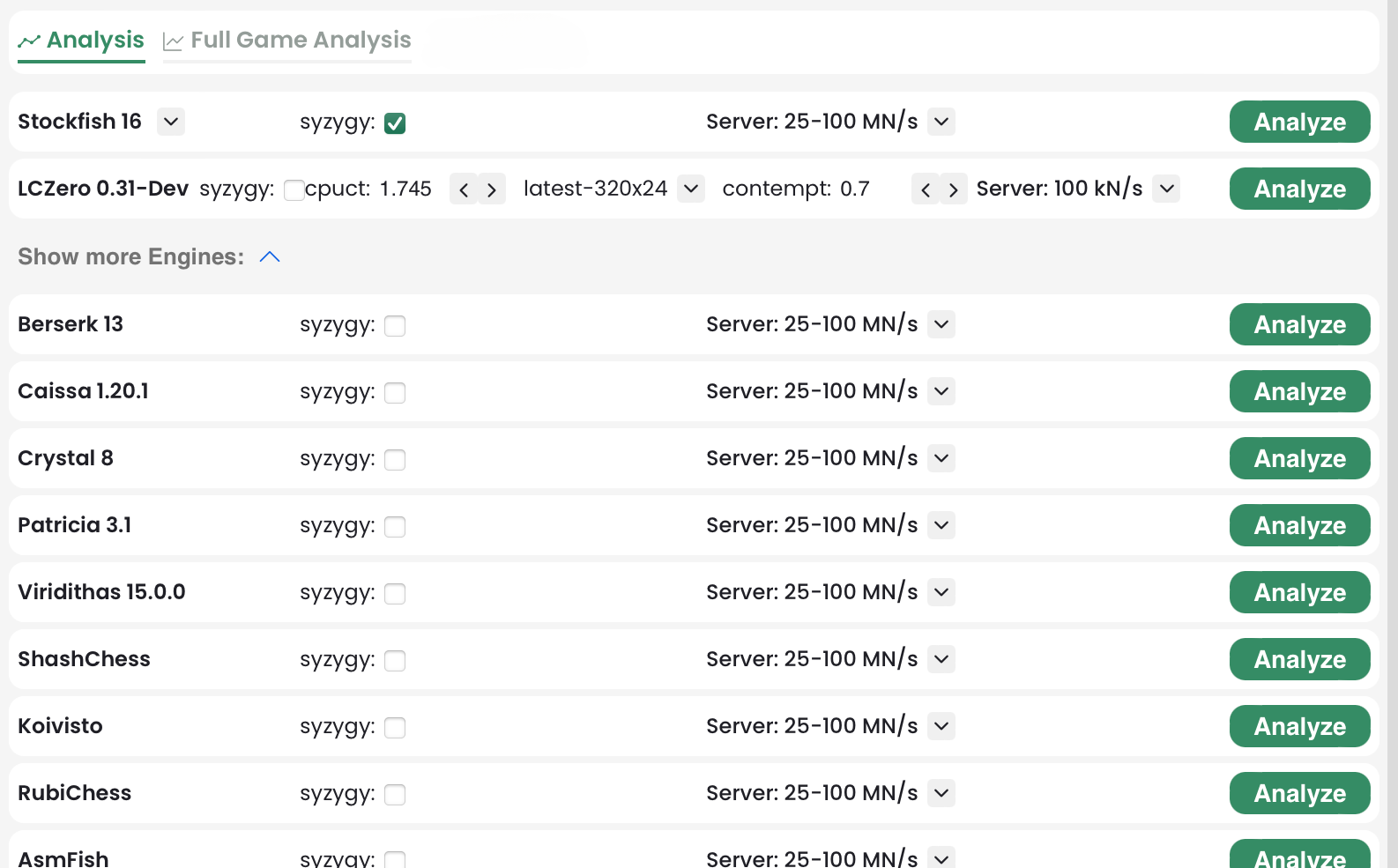
One click, and it all starts running. And how many can you turn on at once? Before, you could easily overload your computer by running just two chess engines at decent depth, but here, not even the fan starts spinning – it’s buzzing somewhere far away. Two engines running, all good. Three, four, five – all still working.
So, the main thing is covered – the analysis runs smoothly (I haven’t even tried the paid features).

From a user-friendly perspective, especially for forgetful chess players who accidentally close the wrong page, the system offers to restart the previous session – nothing was saved, but nothing is lost either. This also happens if there were multiple analysis windows.
Moving on. What about the chess game database? It’s there too… Just like the engines – in abundance.
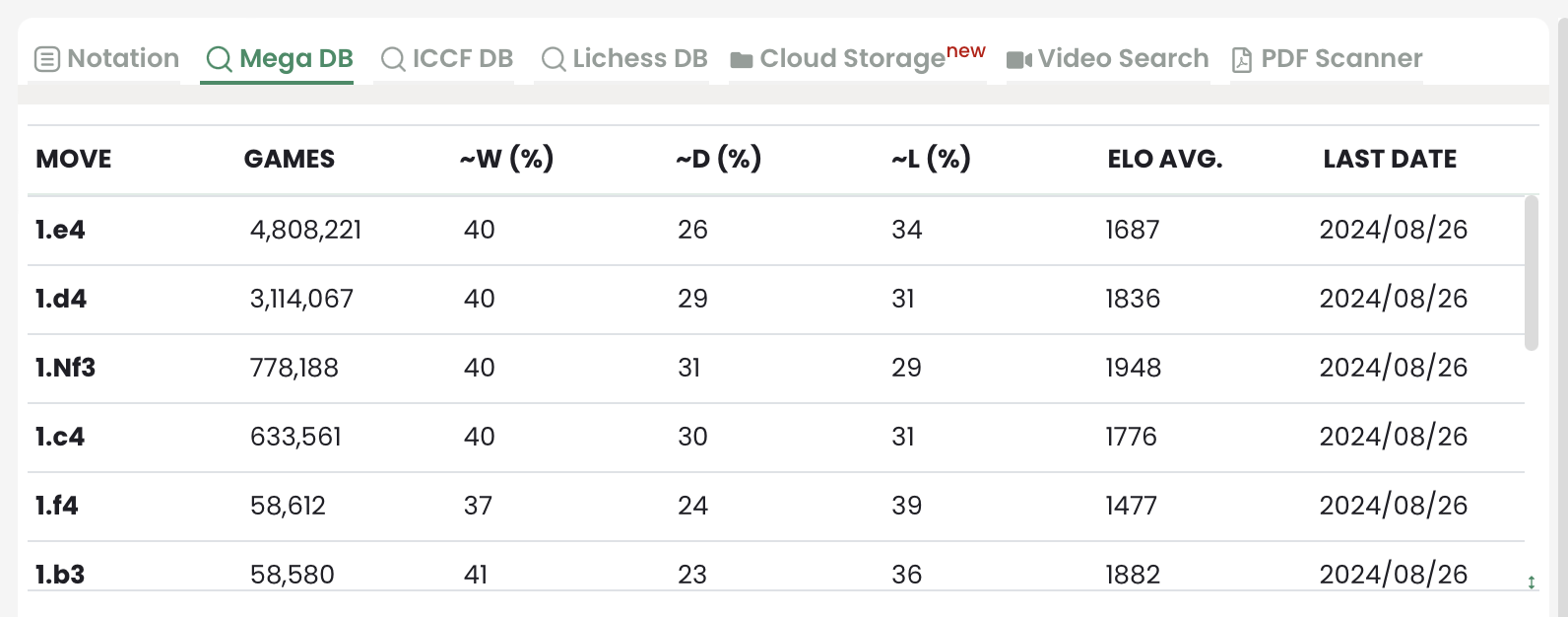
Here's the mega database with over 9 million games; the separate correspondence game database; the LiChess database, and a space for your own saved games and analyses. There are also two unique features that Chessify originally launched with – the chessboard scanner and the YouTube video search which finds videos based on a given chess position instead of a text.
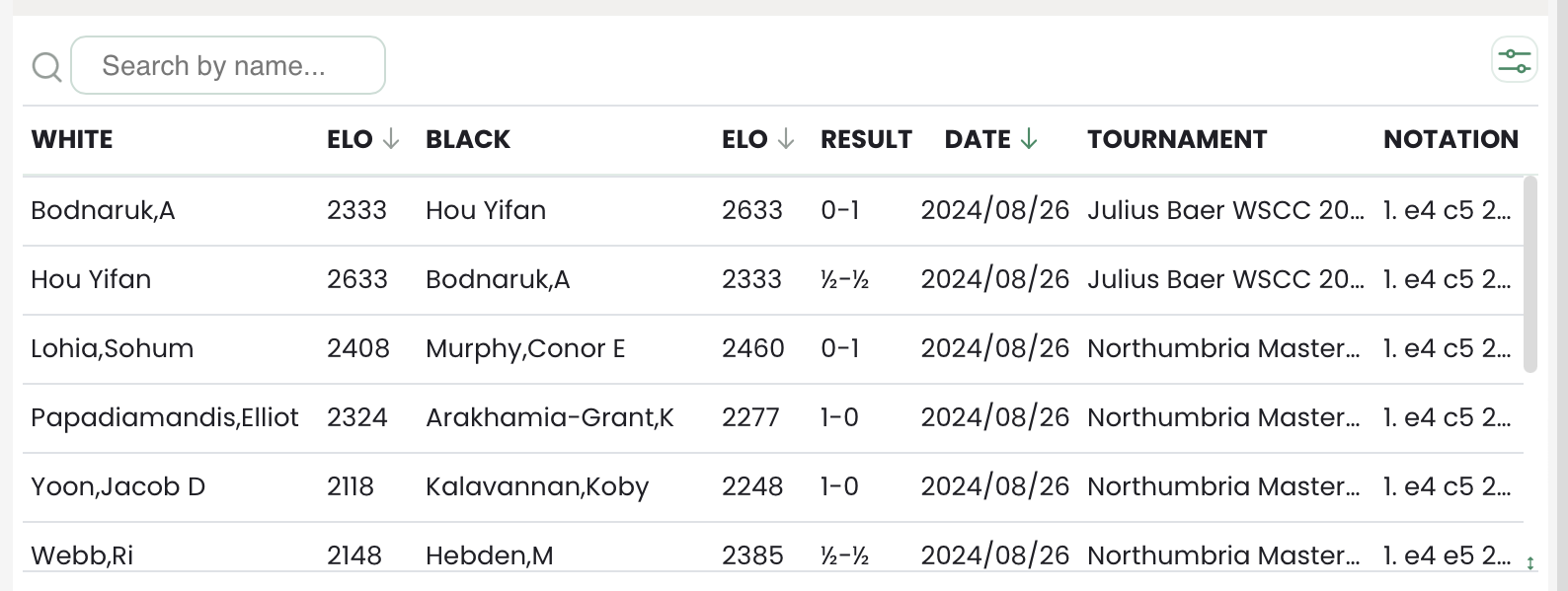
One difference in presentation immediately stands out, which, when you think about it, seems entirely logical. In ChessBase, you instantly see the list of games: opponent names, dates, and results – you’re used to this and expect to see it, but… what do these details actually tell you? If we assume that the database is just a starting point, "ratings" to help you get a specific result, then they’re not needed at all. The moves and statistics of specific continuations are what matter, and those are in the first tab of Chessify. Then there are names, locations, and details (for the LiChess database, they’re even divided into "latest" and "top games").

The important thing is that all three tabs (position, statistics, and headers) are instantly synchronized – no dreaded waiting! Move the slider along the notation or make a move on the board, and the result is ready… And that's truly impressive. In the old days, any search turned into a hassle; ChessBase even created specific database indexing to make the search less cumbersome, so common positions took slightly less time, although waiting around a minute was the norm.
And what about search? The Germans practically mastered it, and when Chess Assistant began outperforming them in some aspects (they were the first to offer pawn structure search, for example), it revolutionized the concept – you could find virtually anything. Chessify also has a "Search" button, but unlike ChessBase, it serves a purely utilitarian function, focused on finding players.
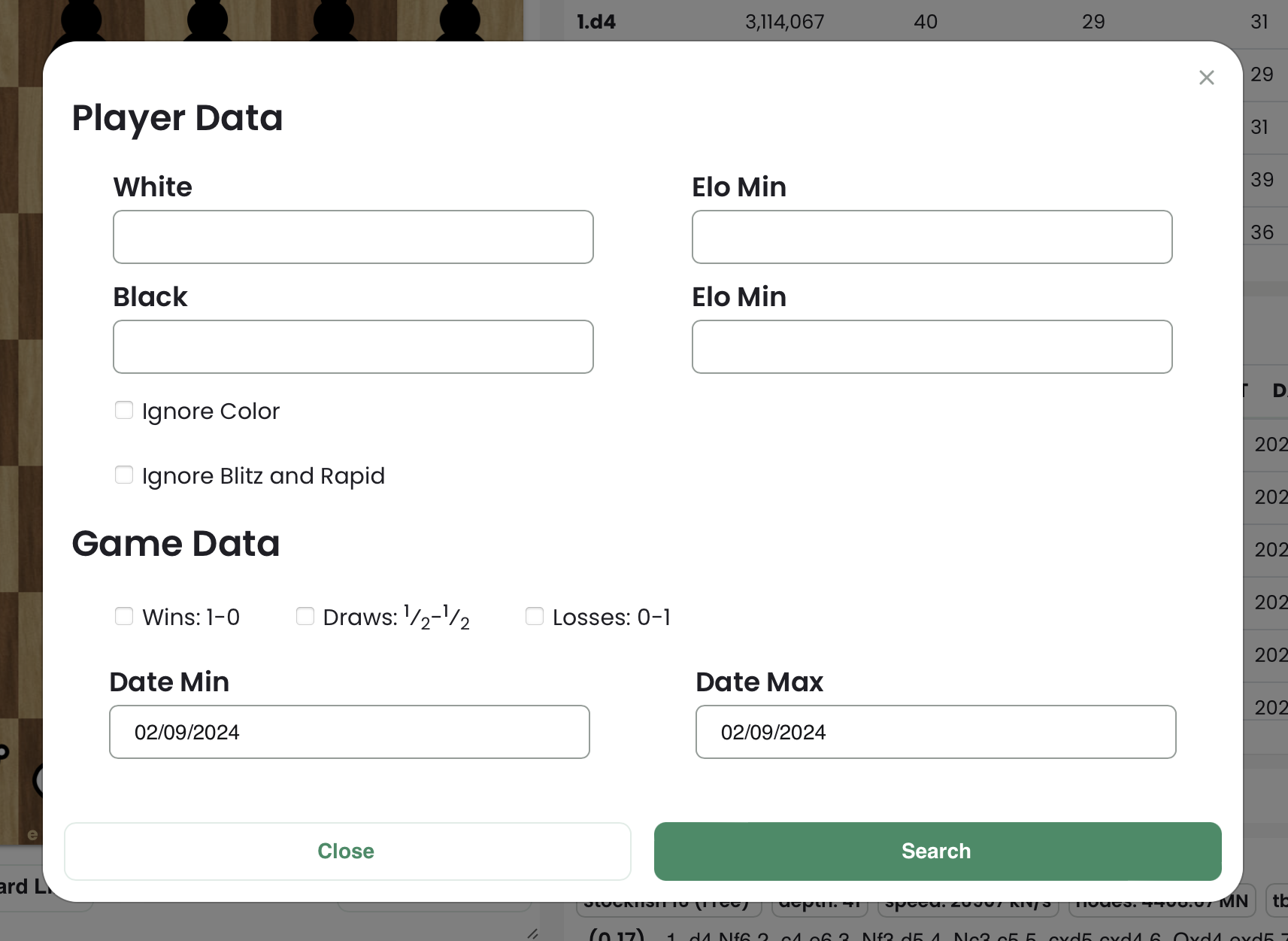
You can search by opponent (or pair), rating or date, ignoring color, rapid and blitz games, and results. It's a basic search, enough to live with, and it doesn't hinder Chessify's main goal – except for our ingrained habits.
You can't help it – you want to see the entire list (not in blocks of 10 games that require clicking "more"), at least roughly know how many chess games there are, and have the ability to see statistics not only by specific moves but also by results between particular opponents. This is essentially a relic, a geek-statistician's wish, but… when you're preparing for a specific game, you sometimes want even more.
On the other hand, why should Chessify resemble ChessBase in everything? They have different features, and here the focus is on something else. For some, the content and ability to search the chess database effectively are key, while for others, it's the quality of chess position analysis, the moves themselves… The difference is significant. One can be supplemented, the other cannot.
Perhaps that's enough for now. An experienced user will need at most an hour to adapt to Chessify, while someone who prefers not to figure things out on their own but to follow the advice of advanced colleagues will need at least a day.
But we're in no rush, so we continue to dive in… Stay tuned for the upcoming blogs about the new user's journey on Chessify.


